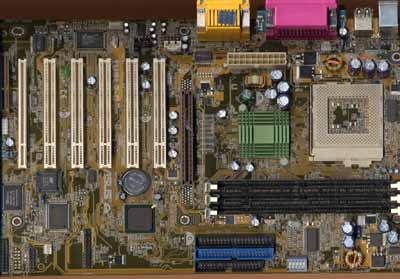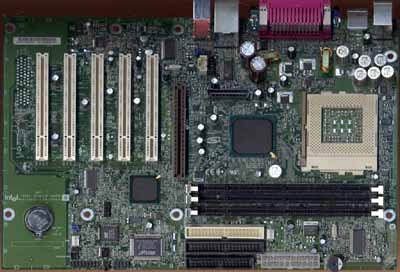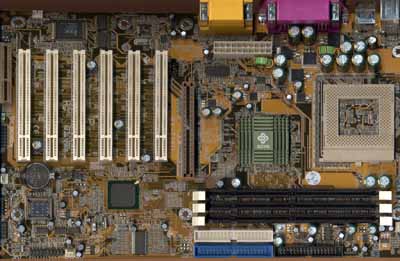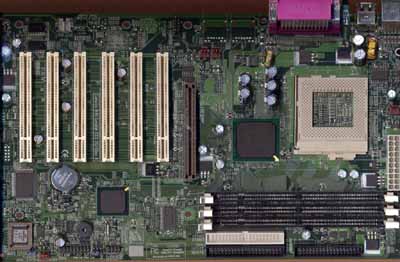
Original Link: https://www.anandtech.com/show/806
i815 B-Step Tualatin Motherboard Roundup - July 2001
by Anand Lal Shimpi on July 31, 2001 2:24 AM EST- Posted in
- Motherboards
Introduction
Yesterday we brought you a look at Intel’s first 0.13-micron Pentium III processor based on the Tualatin core. The performance of the CPU was respectable, often remaining competitive to the Athlon 1.2GHz. In fact, the only real downside to the CPU was the incredible price tag Intel is charging for the CPU. As we established in our review, the reason for the Pentium III’s excessive pricing is to prevent it from competing with the Pentium 4 in the desktop market.
Even if the price weren’t enough of a barrier to purchasing the new Pentium III, the fact that it requires a new chipset/motherboard combination spoils the CPU as a possible upgrade solution for owners of older Pentium IIIs.
These new motherboards that support the Tualatin core are known as Universal Motherboards because they support all Socket-370 processors. The most common Universal Motherboards use the B-Stepping of Intel’s 815 chipset (aka 815 B-Step) or VIA’s Apollo Pro 266T. Today we’re rounding up four 815 B-Step boards that we’ve been testing in the lab in hopes of illustrating the few but important requirements that a good Universal Motherboard must have.
Because the demand for these desktop 0.13-micron Pentium IIIs is expected to be pretty low, we’ll limit the focus of this motherboard roundup. It should serve as an overview for what to look for in Universal Motherboards while giving you a handful of real world examples.
Motherboard Compatibility
One of the biggest rumors that surrounded the Tualatin was that although it wouldn’t work on current Socket-370 motherboards, it would work on older BX motherboards. This rumor, like many others that are prevalent today, is indeed false. Looking back at our Tualatin review we mentioned that the Tualatin uses a lower voltage AGTL bus signaling than the AGTL+ FSB supported by all previous Socket-370 chipsets (1.25V vs. 1.50V). The combination of this and the fact that earlier motherboards did not have the two new pins (VID25mv & VTTPWRGD) that the Tualatin requires for proper operation results in no possibility that the Tualatin will work on older motherboards that don’t properly support the CPU.
ABIT has released an updated BIOS for their Socket-370 BX133 RAID that claims
support for the “Coppermine-T” CPU. Note that this isn’t a 0.13-micron
Tualatin CPU, rather just a version of the 0.18-micron
The Candidates
The boards being compared here are the ASUS TUSL2-C, Intel D815EEA2U, Soyo SY-TISU, and the Tyan Tomcat i815T (S2080).
ASUS TUSL2-C: One major oversight
If the market doesn’t care much about the platform, then why should ASUS spend much time in tweaking the design of an 815 B-step motherboard? The TUSL2-C, as the name implies, is a direct descendent of ASUS’ CUSL2 – their first i815 motherboard. The TUSL2-C is virtually identical to the CUSL2 with the exception that it uses a B-step version of the 815EP Memory Controller Hub (MCH) meaning that it has no integrated graphics.
The TUSL2 features an ample 6 PCI slots, a universal AGP 4X slot and the ubiquitous CNR slot that has yet to be used for anything but obtaining ISO certification.
The board feature’s ASUS usual jumperless Award BIOS setup allowing for a range of FSB frequencies to be selected from 66MHz up to 166MHz; a set of dip switches accompanies the jumperless setup to manually configure the FSB if necessary – mainly tailoring to the needs of ASUS’ large OEM market.
The biggest detraction from the TUSL2-C is the lack of voltage adjustment support with Tualatin CPU's, although it is available when using a Coppermine or Mendocino CPU. It seems as if ASUS didn’t take the time to allow their BIOS to adjust the status of the new VID25mv pin thus preventing any sort of voltage adjustment on the board. Granted this is only an overclocking feature so if that is of no concern to you, then the TUSL2-C is just as solid as its older brother.
Intel D815EEA2U: Intel gets with the times
Intel motherboards have historically been a joke when it comes to overclocking and tweaking features, but they have always been the most stable motherboards you could lay your hands on. It’s a tradeoff that Intel has made countless times in the past: features for stability. However we were happy to see the inclusion of an "Extended Configuration" option in the Phoenix BIOS utility that allowed the adjustment of memory latency timings. Obviously Intel doesn’t want people running their CPUs or memory out of spec, so FSB/memory clock adjustments are still absent from the BIOS setup. But being able to adjust CAS latency is something we have never before seen on an Intel motherboard; oh how times have changed.
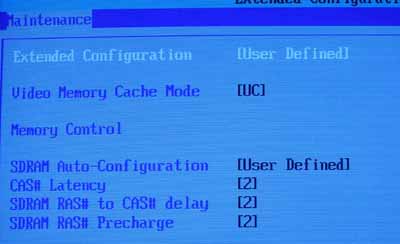
For those of you that have never used an Intel motherboard before, these types of configuration settings are only accessible via a special configuration mode which requires the setting of a jumper. In this configuration mode the only thing you are able to do is adjust settings such as CPU clock multiplier (which only matters for Intel Engineering Sample CPUs) and the Extended Configuration options. In order to actually boot into an OS you’ll have to reset the jumper’s position to exit the configuration mode.
The D815EEA2U actually makes use of the 801BA I/O Controller Hub's (ICH) integrated Ethernet controller as well as its support for four USB 1.1 ports that is easily seen from the 10/100 Ethernet and four USB ports on the back of the motherboard.
Soyo SY-TISU: The tweaker’s motherboard
Out of all four of the motherboards we’re comparing here today, only one actually allowed for the adjustment of the core voltage supplied to the processor. As you can probably guess, that one motherboard was the Soyo TISU. The TISU rivaled the rest of the motherboards in terms of basic features, but blew the competition away in terms of overclocking/tweaking options.
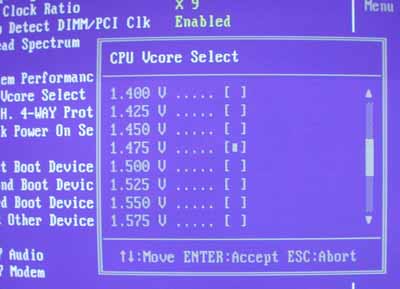
The Soyo combo setup allowed 1MHz adjustment of the FSB from 100MHz up to 255MHz and, as we just mentioned, it allowed adjustment of the Tualatin’s core voltage in 0.025V increments.
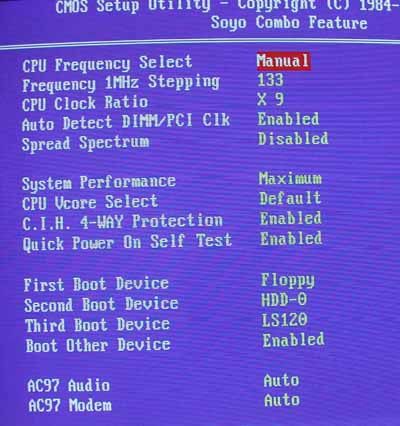
Memory tweaking options were also a little more exhaustive than the other solutions. A nice feature was Soyo’s “Maximum Performance” setting which would automatically set all of your memory timings to the most aggressive values. The Maximum Performance setting worked fine with our Crucial PC133 CAS2 SDRAM.
Tyan Tomcat i815T: A Match for the Pentium III-S?
The final entry into this short roundup was the Tomcat i815T from Tyan. Most recently Tyan has received quite a bit of positive press about their last motherboard launch, the world’s first 760MP board: the Tyan Thunder K7.
The Tomcat i815T shares virtually nothing in common with Tyan’s current flagship with the exception of one option. The Thunder K7 made a perfect web/database server motherboard in part because of its dual on-board Ethernet controllers. While our evaluation i815T didn’t have even one on-board Ethernet port, the space for two ports was silk screened on the motherboard as well as room for a second Ethernet controller to drive the second port. Combined with a 512KB L2 Tualatin (Pentium III-S), an OEM version of the Tomcat i815T could make a decent 2U server.
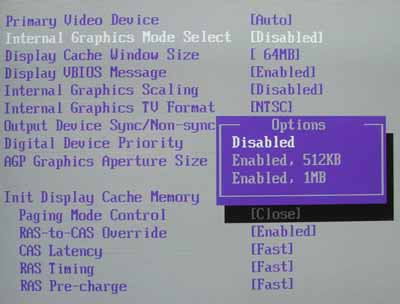
Another thing we noticed about the i815T was that in the BIOS setup, a number of options relating to the 815’s integrated video were left in the setup. The board we received did not feature integrated video but a combination of a dual Ethernet setup and integrated video could make this board the perfect standalone server motherboard for a single processor Pentium III server. Again, that would make a Pentium III-S a good mate for this board.
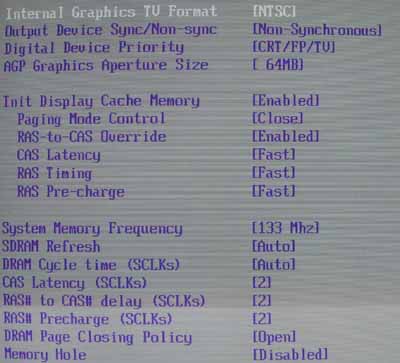
The only thing that would prevent this dream from becoming a reality is the fact that the board does not feature angled DIMM slots, meaning that the smallest case it can be put in is a 2U chassis. That’s not too big of a deal, but a version with angled DIMMs as well as the aforementioned integrated video/dual Ethernet ports would be a good base for a 1U server.
Overclocking
The oboards that supported any type of overclocking features were the ASUS TUSL2-C, Soyo SY-TISU and the Tyan i815T. Of those three, only the Soyo board offered voltage adjustment.
In terms of overclocked stability, the ASUS was more readily able to take our 1.2GHz Pentium III to 1.44GHz (160MHz x 9.0) but without any voltage adjustment we were unable to make the system stable at that speed. The Tyan didn’t overclock well at all, it wasn’t able to boot at its max FSB speed of 157MHz. The Soyo offered the greatest potential because of the core voltage adjustment options, unfortunately the ASUS seemed to offer greater stability at the higher FSB frequencies even in spite of this. This is partially due to the fact that ASUS supplies a slightly higher voltage to the core than the processor requests (the CPU requests 1.475, yet the motherboard provides around 1.5V).
The Test
For the performance tests we focused on three categories: Business/Office performance, professional 3D rendering/animation performance, and 3D gaming performance. Due to the relatively small performance differences between the motherboards, the benchmark suite was limited to only three tests. For a much more thorough evaluation of the Pentium III 1.2GHz consult our recent review.
Do not compare these scores directly to those in the Pentium III 1.2 review as we are using a slightly different test setup.
Windows 2000 Test System |
|||||||
|
Hardware |
|||||||
| CPU(s) |
Intel
Pentium III 1.2GHz
|
||||||
| Motherboard(s) |
ASUS
TUSL2
Intel D185EEA2 Soyo SY-TISU Tyan Tomcat i815T (S2080) |
||||||
| Memory | |||||||
| Hard Drive |
IBM Deskstar 30GB 75GXP 7200 RPM Ultra ATA/100 |
||||||
| CDROM |
Phillips 48X |
||||||
| Video Card(s) |
NVIDIA GeForce3 64MB DDR (default clock - 200/230 DDR) |
||||||
| Ethernet |
Linksys LNE100TX 100Mbit PCI Ethernet Adapter |
||||||
|
Software |
|||||||
|
Operating System |
Windows 2000 Professional Service Pack 2 |
||||||
| Video Drivers |
|
||||||
|
Benchmarking Applications |
|||||||
| Gaming |
Quake III Arena v1.29f demo four |
||||||
| Productivity |
Winstone 2001 |
||||||
| 3D Graphics |
3D
Studio MAX R4
|
||||||

The performance range between the “slowest” motherboard, the Tyan i815T, and the “fastest” motherboard, the ASUS TUSL2-C, is approximately 0.9%; in other words, the performance difference between the four is negligible.

In the 3D Studio MAX test we see that the performance ranges over approximately 1.7% between the fastest and the slowest board, again, the difference is insignificant.

The only performance difference that can even be placed on the map occurs in Quake III Arena at 640 x 480 x 32 where the Tomcat i815T is outperformed by the SY-TISU by a 3.5% margin. Cranking up the resolution to a more playable setting will make that performance difference reduce considerably. To put it bluntly, these motherboards perform the same.
Final Words
The Socket-370 platform has been around for a couple of years now, and the i815 chipset served us well for just over a year. It isn’t surprising that these four motherboards based on a new variant of a Socket-370/i815 platform are indeed very mature; we’d expect similar results out of other Universal Motherboard platforms as there is no excuse to screw one of these designs up.
The stability of all four of the motherboards we compared here today was overall very good. It was difficult to distinguish one motherboard from another in terms of stability (even harder than it was to differentiate them according to performance).
Out of the four, the Soyo SY-TISU was clearly the most overclocking/tweaking friendly. The ASUS was more stable at overclocked speeds however; it’s a shame that the board has no voltage adjustment.
The Intel D815EEA2 actually puts the capabilities of the chipset to use, offering four on-board USB ports, an on-board Ethernet port and of course AC’97 audio. It looks like it’ll take the nForce to finally bring integrated Ethernet to the eyes of Taiwanese motherboard manufacturers.
As far as the Tyan Tomcat i815T goes, the potential for it to be a entry-level server solution is there but in the form it was provided to us it’s nothing more than a plain i815 motherboard.

